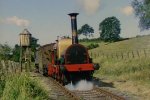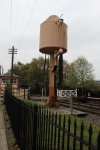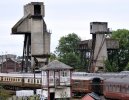Well knowledgeable type people. This is actually for a friend who’s modelling a fictional small ex GWR terminus along the lines of Hemyock in Devon in the early 1970s:
Would anyone know of any places where water towers/cranes hung around on the network disused into the early 1970s? I’m after photographs for inspiration really, especially if they were ex GWR ones, although anything around the country would be interesting as well as any anecdotes.
Thanks in advance for any thoughts!
Would anyone know of any places where water towers/cranes hung around on the network disused into the early 1970s? I’m after photographs for inspiration really, especially if they were ex GWR ones, although anything around the country would be interesting as well as any anecdotes.
Thanks in advance for any thoughts!





